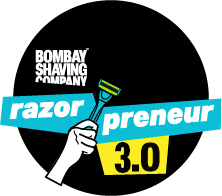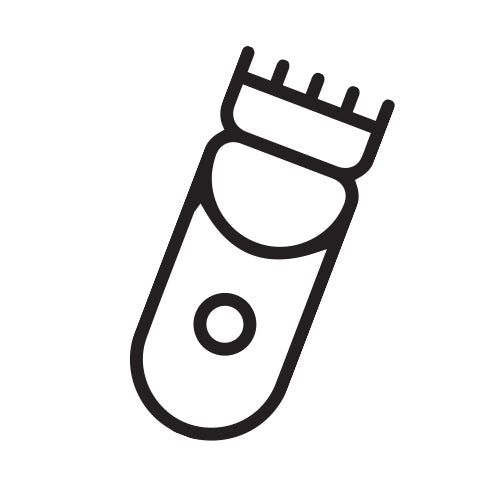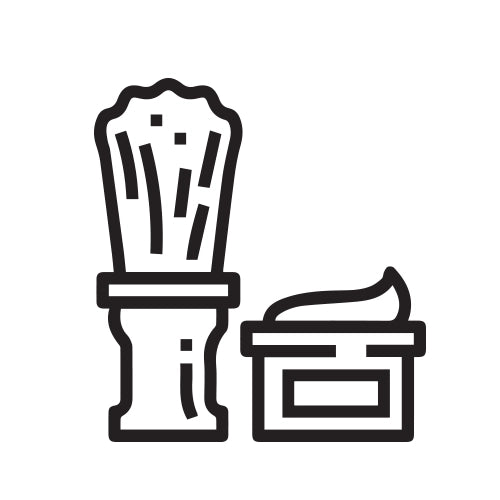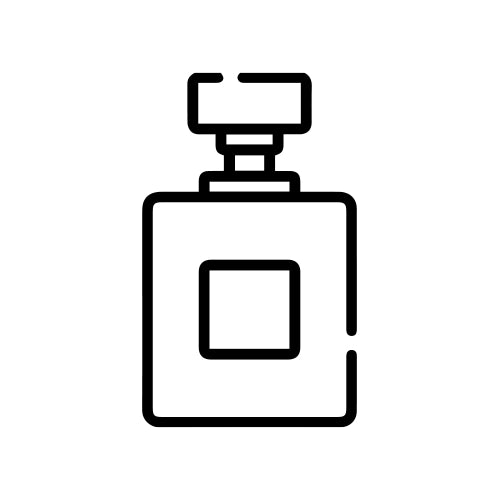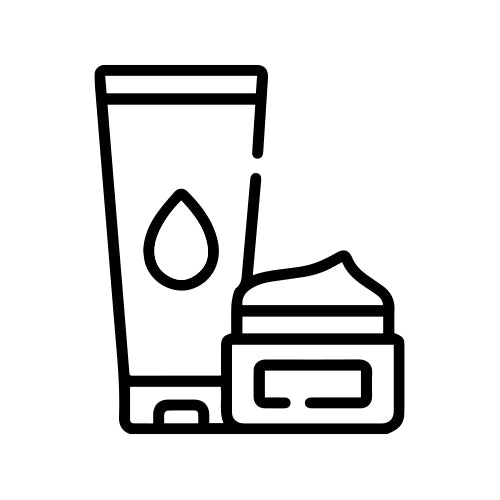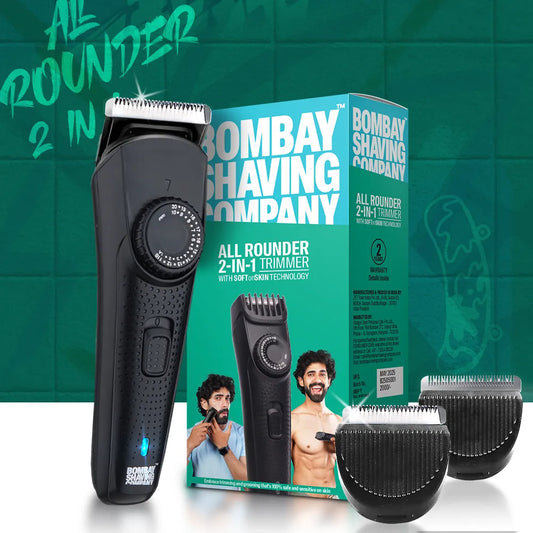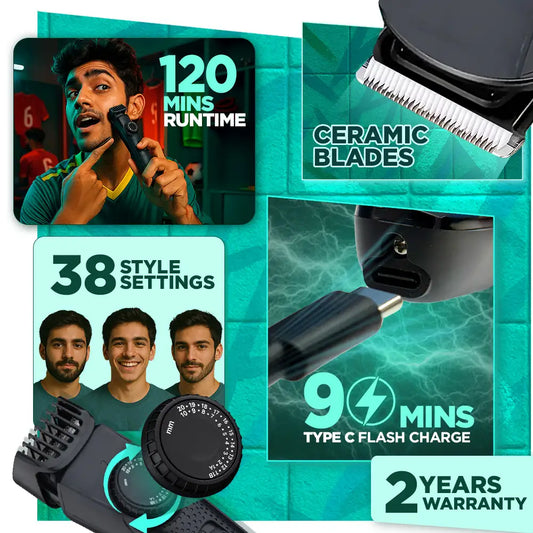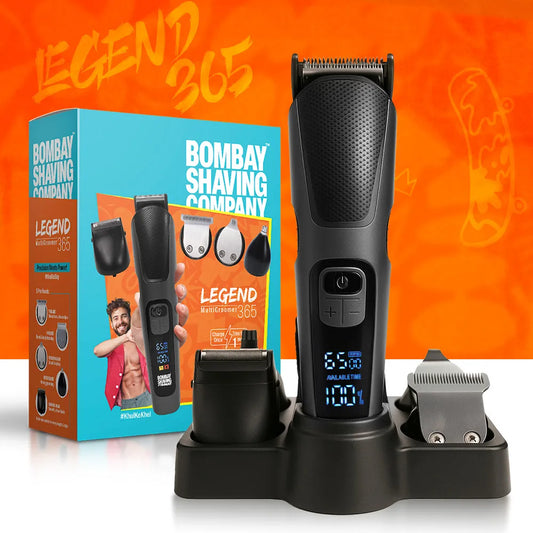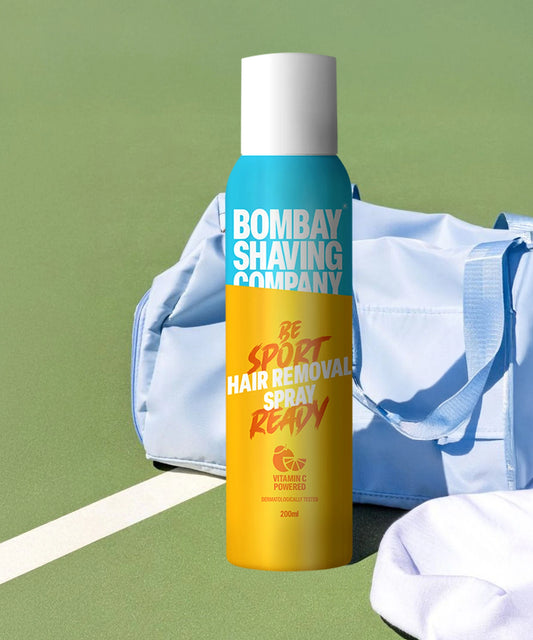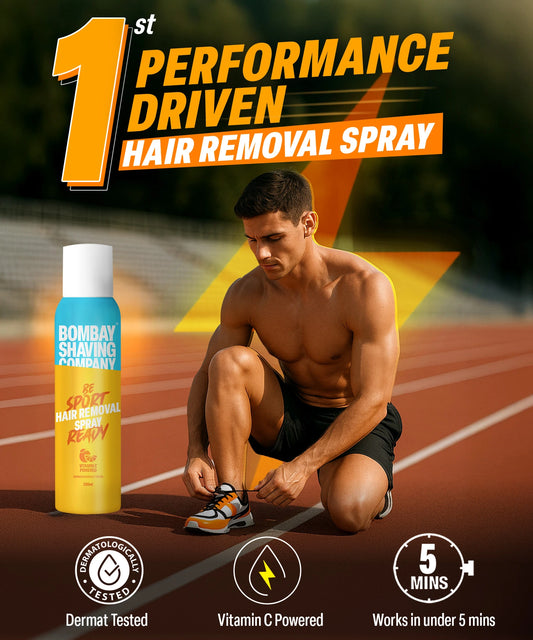When the stands of your hair curl back or sometimes grow sideways into the surface of the skin instead of emerging from the follicles, INGROWN HAIR happens!!
This can lead to inflammation, redness, and small, painful bumps. Ingrown hairs are more common in areas where hair is frequently removed such as the beard area in men. Before we plunge into the strategies for combating these mischievous ingrown hairs, it is crucial to unmask the culprits behind the chaos.
Picture this, as you shave, you're expecting a smooth, hassle-free shave, but instead, you find yourself with raised, angry bumps on your skin. Say hello to ingrown hairs, these sneaky f**ks lurking beneath the surface.
Let’s understand this in detail.
The Science behind it

Our body has hair follicles beneath our skin’s surface.
Definition of hair follicle: A tiny tunnel-like area within the skin. When you remove hair with methods like shaving, waxing, or plucking, it grows back naturally from the surface of the skin.
However, sometimes, it does happen the way we want it to happen, and these new strands of hair get obstructed by dead skin cells or other debris, which leads them to curl back or grow sideways under the skin. The aftermath of this is redness, inflammation, and a whole lot of annoying times.
Do they happen in some specific areas of your skin?
Short answer…..yes!!
These strands of hair seem to have a preference. Let's look at them to get a clear understanding and the common areas where they love to flourish.
Beard: Gents, listen up! The chin, jawline, and neck happen to be the favourite hideouts for ingrown hairs, especially if you are someone who prefers clean shaving.
Legs: The lower limbs are no stranger to the ingrown hair invasion either. It happens mostly after or while using improper hair removal techniques.
What causes it?
How you do it matters.
Shaving, waxing, plucking, and any form of hair removal sessions when done incorrectly or too aggressively increases the chances to disrupt the natural pattern of your hair growth, all this makes the freshly shaved skin entrap hair follicles beneath the skin's surface.
The twisted road of curly or coarse hair types
For those blessed with curly or coarse hair, the twisted road to styling poses unique challenges in the battle against ingrown hair. The inherent curliness or thickness of the hair can lead it to curl back into the skin, creating an increased risk of ingrown hairs.
Did you check on your clothes?
Now, who would have thought that your clothing choices could also play a part in the ingrown hair battle? Tight clothing and wearing snug outfits, particularly right after hair removal, causes friction and pressure on the skin, leading to…..you know what… ” INGROWN HAIR”.
If you suffer from the pain of ingrown hair and want to reduce your burden, be mindful of clothing choices and provide your skin with the space it deserves. So, yeah next time you go shopping, keep these tips in mind to shield your skin from the ingrown hair traps.
Prevention
Exfoliation
This is the first line of defence. With the help of exfoliation, you gently slough away dead skin cells to create a clear path for hair to grow outward.
Select the best tool
The battle against ingrown hairs requires precision, and our choice of hair removal tools is no exception. For this, you need to give time and explore Hair Removal Products and kits to find the perfect one for yourself. Remember, the right tool is not just about effectiveness but also about maintaining the health of your skin.
Shaving creams and gels
They provide lubrication and protection during the hair removal process. It creates a barrier between our skin and the razor with ease.
Mastering the art of shaving
It is more than just a swipe of the razor. Explore the best practices to achieve a silky-smooth shave without irritating our skin. Follow the routine of pre-shave and post-shave practices to master this dance, elevate your shaving game, and reduce the risk of ingrown hairs like a champ.
Treatment Options
Warm compress
When you apply warm compresses to the affected area it helps reduce inflammation and soften the skin, eventually making it easier for the ingrown hair to break free.
Regular exfoliation
Regular skin exfoliation with a mild scrub or exfoliating brush can remove dead skin cells and prevent clogged pores. Which eventually reduces the chances of getting ingrown hairs.
Avoiding tight clothes and irritating fabrics
Baggy clothes and avoiding materials that irritate the skin, like synthetic fabrics can minimise friction and irritation around the ingrown hair area. Go for breathable outfits. Baggy clothes are in, why don’t you try some.
Topical creams and gels
Look for creams or gels with ingredients like salicylic acid or glycolic acid. These products can help exfoliate the skin better while nourishing it and ease the release of ingrown hair from the surface of your skin.
THAT’S A WRAP
So there you have it - that is our take on those pesky ingrown strands of hair! You can prevent them with the right hair removal techniques, like shaving with the grain and gentle exfoliation. If they do pop up, try some natural remedies like tea tree oil or aloe vera to soothe the skin. And if nothing works, do not hesitate to see a dermatologist for expert advice.
Frequently Asked Question
Q. Is it safe to pop or pick at an ingrown hair on my own?
A. Firstly, that’s gross, and popping or picking at an ingrown hair is not recommended, as it can lead to further infections. Instead, use a warm compress and exfoliation techniques to help the hair come out of the surface of your skin naturally. If the situation does not get better consult a dermatologist for professional extraction.
Q. How long does it take for an ingrown hair situation to get better?
A. Depends on factors like its location, severity of inflammation, and skin sensitivity. In most cases, ingrown hairs may go away within a few days to a few weeks. However, it requires professional attention if it has been there for very long.


